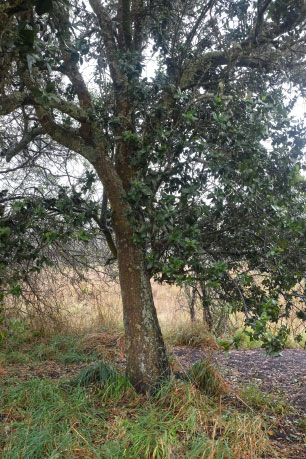NORTH KOHALA NATIVE CORRIDOR PROJECT
- Working to establish a mauka-makai corridor of native and endemic tree species while providing information, education and food for the local community.
- Focused on creating a working model for establishing contiguous mountain to ocean corridors of native and endemic tree species on Kohala Mountain.

Prior to western contact, the area of North Kohala was home to both a diverse forest and an extensive raised field agricultural system. After more than 200 years of deforestation, there are no longer endemic species below 2000 feet of leeward Kohala. The largest agricultural industry in Kohala is livestock and most of the available land is kept as pasture for grazing. Over the past decade, the region has suffered prolonged drought resulting in a reduction in herd size, and overgrazed pastures covered with toxic weeds. Studies show that trees increase the infiltration of water, reduce evaporation from the soil and surface run off. Within the project area there are ~ 4 land owners with greater than 500 acres and ~ 500+ landowners with less than 500 acres. We have discussed our project with local landowners and all parties expressed the need to improve their pastures and enthusiasm for native trees. However, everyone emphasized the need for proven methods and economic analyses that can justify expenses. This is what the Kohala Native Corridor Project seeks to provide the community in its first phase of development.
METHODS
- Since 2008, five acres of pasture have been transitioned into 13 reforesting system trials that have been planted, amended, and maintained in a unique manner, utilizing Syntropic Farming strategies.
- Soil composition, moisture, and temperature are being documented, along with species, materials and labor costs.
- KNCP has generated a substantial repository of plant material, data and experience.
Return to Projects Page